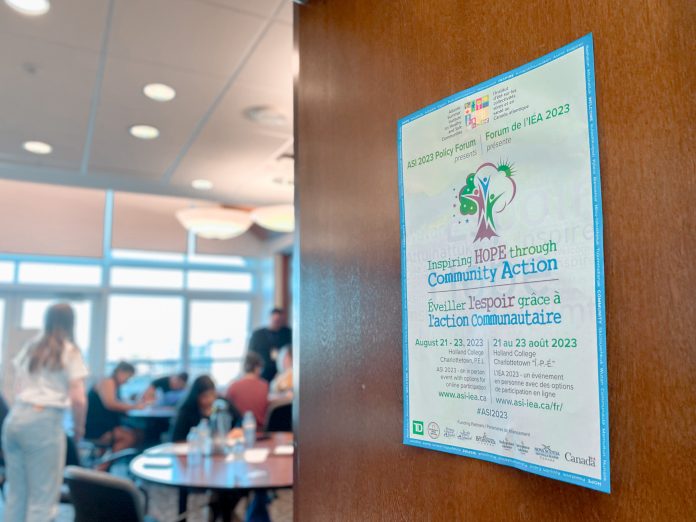This is the third article in a series published by Open Access Journal that addresses the gap between evidence and action in health promotion
In this paper, I propose that the power of collective leadership is to both build on and contribute to evidence. And this must happen in concert with engaging the passion of others, sparking innovation, and inspiring collaboration.
The story of the Atlantic Summer Institute on Healthy & Safe Communities (ASI), a bilingual, not-for-profit organisation established in 2003, illustrates these qualities.
Background
In 2003, the Atlantic region of Canada (the four provinces of New Brunswick, Newfoundland and Labrador, Nova Scotia and Prince Edward Island) was challenged by a decline in traditional industries, out-migration of youth and an ageing population. Demands on the health sector were rising. Government investment in social programmes was often without the collaboration of respective actors. Non-government organizations worked independently of each other, often with the same populations. There was no existing structure to gather civil society to explore the evidence, collaborate on solutions and develop the skills required. Health Promotion summer schools, while operating in other parts of Canada, did not exist in the region.
Taking the lead, inviting others
A small group, passionate about addressing these issues, submitted an unsolicited proposal to Health Canada (Atlantic Region) for seed funding to develop a Regional Advisory Committee, a needs assessment and a business plan for a health promotion summer school. The National Crime Prevention Strategy funded the first event in 2004 – Meeting of the Minds. The name Atlantic Summer Institute on Healthy & Safe Communities resonated with health promotion and safety sectors. The Circle of Health© was adopted as the programme planning framework.
A profile of Atlantic Canada was prepared by Dr. Doug May (2005), and future institutes addressed evidence profiled in this publication. For example: 2005 Embracing Diversity – Building Community; 2006 Innovation and Collaboration – Building Resilient Communities; and 2007 Strengthening Communities Across Generations.
Shared values and vision: With enthusiasm to sustain the organisation, a Body and Soul Committee was tasked with the job of selecting a structure that captured ASI values and vision. ASI incorporated in 2008.
Building a movement: Since 2014, ASI has focused upstream on infant, child and youth mental health promotion. In 2017, responding to growing evidence (Simpson, 2017) a Call to Action attracted national and international partners.
In the midst of the COVID-19 pandemic, ASI determined that the time had come to break through the rhetoric and advocate for policies that could have long-term, population-wide impacts on mental well-being. In shared leadership with ASI, A Way Home Canada, a 20-member Working Group with participants from 9 provinces (public health, research, mental health, education, non-profit, and other sectors) committed to a year-long “crowdsourcing” process to design a policy brief and knowledge mobilization strategy.
Achieving impact: The policy brief, Investing Upstream – Placing Infant, Child and Youth Mental Health Promotion at the Forefront was released on 9 March 2022. Guided for the next year by an intersectoral steering committee, ASI engaged people from different geographies, cultures, sectors and government at many levels, ie municipal, provincial, federal and Indigenous in Atlantic Canada.
A notable success of the work was a motion to the Legislative Assembly of the Government of PEI on 29 March 2022 to encourage government to adopt the policy brief recommendations in full, unanimously supported across all political parties.
Summary: ASI was built on a dream to develop a health promotion summer school that would build the capacity to address the social and structural determinants of health in Atlantic Canada. This year, the 20-year anniversary of ASI – The Enduring Spirit of Collaboration: Celebrating 20 years with ASI – will reflect on its accomplishments, inspire a vision for continuing collaboration and create a history of health promotion action in Atlantic Canada – a foundation to build on in the future.
Collective leadership and collaboration conclusion
This story has not ended. ASI does not yet have sustainable funding and there is more to do. But it illustrates how one idea can capture the energy of many when it resonates with need, builds on evidence and invites wide societal engagement. Each programme builds on evaluation and emerging evidence, serving as an incubator for new ways of learning. Like building a snowman, collective leadership and collaboration have the power to mobilise dreams.
Contributor Details
More About Stakeholder
-
A comprehensive approach to health promotion with the Quaich Inc.
The Quaich Inc. is a well-respected, internationally recognized health promotion consulting company located in Prince Edward Island, Canada.
















